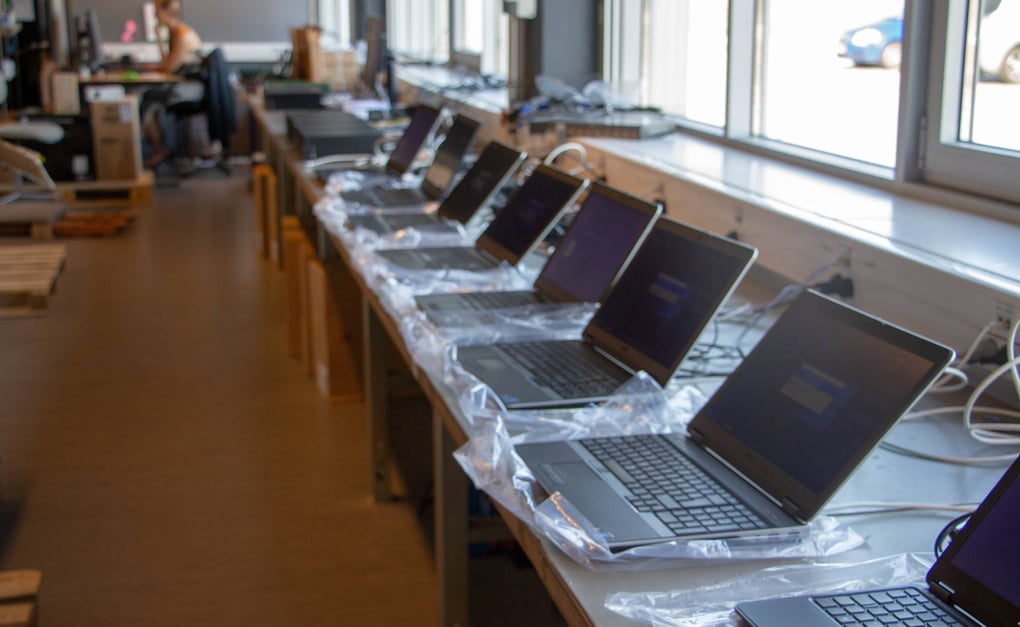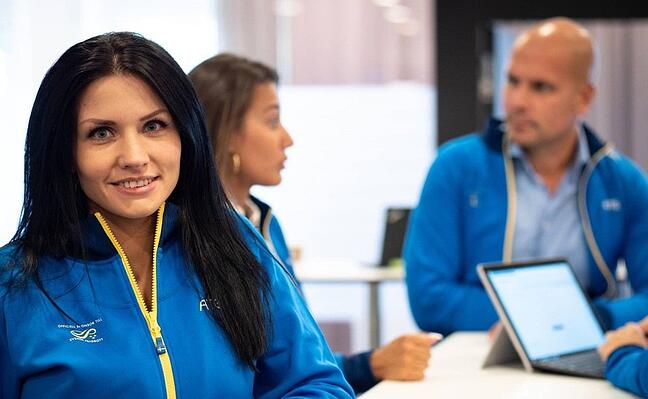
Client:Atea
Industry:High Tech
Region:Europe
Information Technology (IT)
Speed and flexibility drives RPA adoption at Atea

80
Automations help integrate 50 separate companies over 80 locations
200+
processes automated since 2017
600
Deliver flexible automations across a fragmented IT landscape of over 600 separate systems
RPA
only automation solution capable of the speed and flexibility needed as Atea business changes
<2 weeks
Complete automation delivered for one customer in under two weeks from concept to production
Client Overview
Atea is the leading IT infrastructure provider in Europe’s Nordic and Baltic regions. With more than 7,000 employees located in 84 offices across seven countries—Norway, Sweden, Denmark, Finland, Lithuania, Latvia and Estonia—the company combines a unique breadth of IT infrastructure products and services combined with local expertise in each of its markets. Atea deployed RPA to increase agility and efficiency as the business grew rapidly.
50 separate companies. Over 600 different IT systems. Thousands of process variations. Atea chooses UiPath RPA solutions to facilitate its continuously evolving business model.
There are very few organizations that have grown as quickly or aggressively as Nordic IT provider, Atea. In a very short period of time, it acquired 50 companies to broaden the portfolio of products and services it offered customers. The company turned to Robotic Process Automation (RPA) to deliver the speed and flexibility it needed to successfully achieve its business strategy.
Effectively managing business growth can be difficult and that is compounded when you’re growing through acquisition. That’s the situation in which the service center at Atea found itself. The center is responsible for managing the organization’s IT systems, providing services to customers, and managing a very broad range of business processes for the company. In all, that amounts to over 600 IT systems spread across 80 locations in the Nordic and Northern Europe.
Robert Giori, Group Chief Finance Officer (CFO) at Atea, outlines the challenge: “Merging 50 companies together quickly created a very a dispersed system landscape. We have many different systems in different countries with processes in each country that are slightly different to each other. At the same time, our business is changing rapidly, and we have to be able to quickly change our processes to meet our new strategies.”
Changing business model increases complexity
Today, Atea’s shared service center is processing millions of transactions from thousands of customers each year so continually improving efficiency while reducing costs is vital. In addition, the company is transitioning from a product-focused to a service-based company, which is creating more complexity in existing transaction and introducing a completely new set of transactions to manage.
This increased workload could not be accommodated manually so Giori and his team knew that they needed to automate as much of its simple, repetitive processes as possible. In addition, new transactions and work practices were exposing gaps in processes that had to be filled manually as the company evolved. This was a situation that couldn’t continue.
Christian Våge, RPA lead at Atea, explains: “It quickly became apparent that RPA offered us a solution that could deliver automations at a speed that allowed our business to transition as we needed. There was simply no other technology that could do that.”

Using RPA, the company has been able to quickly automate the mundane, rules-based tasks. It was able to handle back-office work that differed from country to country while removing the need for large-scale automation or new system development as the business changed. Any business change could be effectively handled through small RPA developments that created simple automations across the legacy infrastructure at each location.
“RPA was the ideal solution for handling transactions across the dispersed processes and fragmented system landscape within our group – with very little upfront investment. You could quickly establish new RPA programs and adapt existing ones, so we weren’t frozen into one way of doing business. We had the flexibility to change automations as our business changed,” says Giori.
RPA was the ideal solution for handling transactions across the dispersed processes and fragmented system landscape within our group – with very little upfront investment.
Robert Giori • Chief Finance Officer (CFO), Atea
Saving time, increases quality
Since the RPA program’s inception in 2017, Atea has automated more than 200 processes. It has focused on the simple, repetitive tasks within key business processes that take too much time and can lead to errors that can damage the business.
Giori points to pricing automations as an example. Previously, all pricing had to be updated manually on a regular basis. The move towards services has seen the introduction of more personalized pricing for each customer that have to be updated even more frequently. This work is very tedious, but errors are costly.
It quickly became apparent that RPA offered us a solution that could deliver automations at a speed that allowed our business to transition as we needed. There was simply no other technology that could do that.
Robert Giori • Chief Finance Officer (CFO), Atea
“When you’re manually amending prices across thousands of customers, errors creep in. Any pricing errors in your system have a tremendous impact on your income. RPA means we can automatically update our pricing to each individual customer while virtually eliminating errors,” he says.
It’s the time savings that have most impressed Våge. For instance, orders were previously received by the shared service as a PDF and the data had to be taking from that document before being entered into the ERP or other back-end systems. Now, this is all handled by an RPA automation that is freeing a great deal of time for the center’s staff.

Våge comments: “We’ve found RPA is excellent for any process where you’re accessing different systems and moving data between systems. It’s fast and accurate. It has improved the exchange of information between the different locations and the shared service center while increasing the center’s productivity. All without increasing headcount or costs."
“Our business is growing and growing. The shared services center is continually taking on more work. We haven’t had to increase staffing. In fact, we’ve been able to move many of our people to higher value work. One colleague that was only responsible for manually entering orders is now project manager in charge of our Microsoft competencies. That’s a win-win for everyone.”
One colleague that was only responsible for manually entering orders is now project manager in charge of our Microsoft competencies. That’s a win-win for everyone.
Christian Våge • RPA Lead, Atea
Building a successful platform for RPA
To ensure the RPA program was effectively managed, Atea established a Center of Excellence within the shared service center from the beginning. The center handles all the development and management of automations while working closely with the local CFOs in each country to identify and prioritize processes for automation. Today, the center has business analysts and 15 RPA developers based in Riga and Vilnius.
Våge says that his team has benefited from the relationship with UiPath. He says: “As well as a powerful set of tools, we’ve always worked closely with UiPath. The company has helped us the processes that will most benefits from RPA, and we used the UiPath blueprint when establishing our Center of Excellence. This has made it easy for us to scale our automations and take them into production.”
We used the UiPath blueprint when establishing our Center of Excellence. This has made it easy for us to scale our automations and take them into production
Christian Våge • RPA Lead, Atea
How Atea customers are seeing the benefit
The RPA work that Atea has undertaken internally is also benefiting its customers. The company began to offer RPA automation as a service in 2018 and was quickly able to transfer some of own work to help customers automate their processes. The company quickly integrated both internal and external development within the center of excellence to ensure it captured all the benefits for all parties. In one case, the team was able to take previous experience to introduce an automation for one client in under two weeks from concept to production.
I think we’ve automated all the simplest tasks and we’re now moving on to more complex processes. The ability to automate key processes end-to-end will be important as we start to consolidate our IT infrastructure and further embrace digital transformation.
Robert Giori • Chief Finance Officer (CFO), Atea
“I think we’re now very mature in our deployment of RPA. I think we’ve automated all the simplest tasks and we’re now moving on to more complex processes. The ability to automate key processes end-to-end will be important as we start to consolidate our IT infrastructure and further embrace digital transformation,” concludes Giori.
Related case studies
Ready for your own case study?
Speak to our team of knowledgeable experts and learn how you can benefit from agentic automation.





